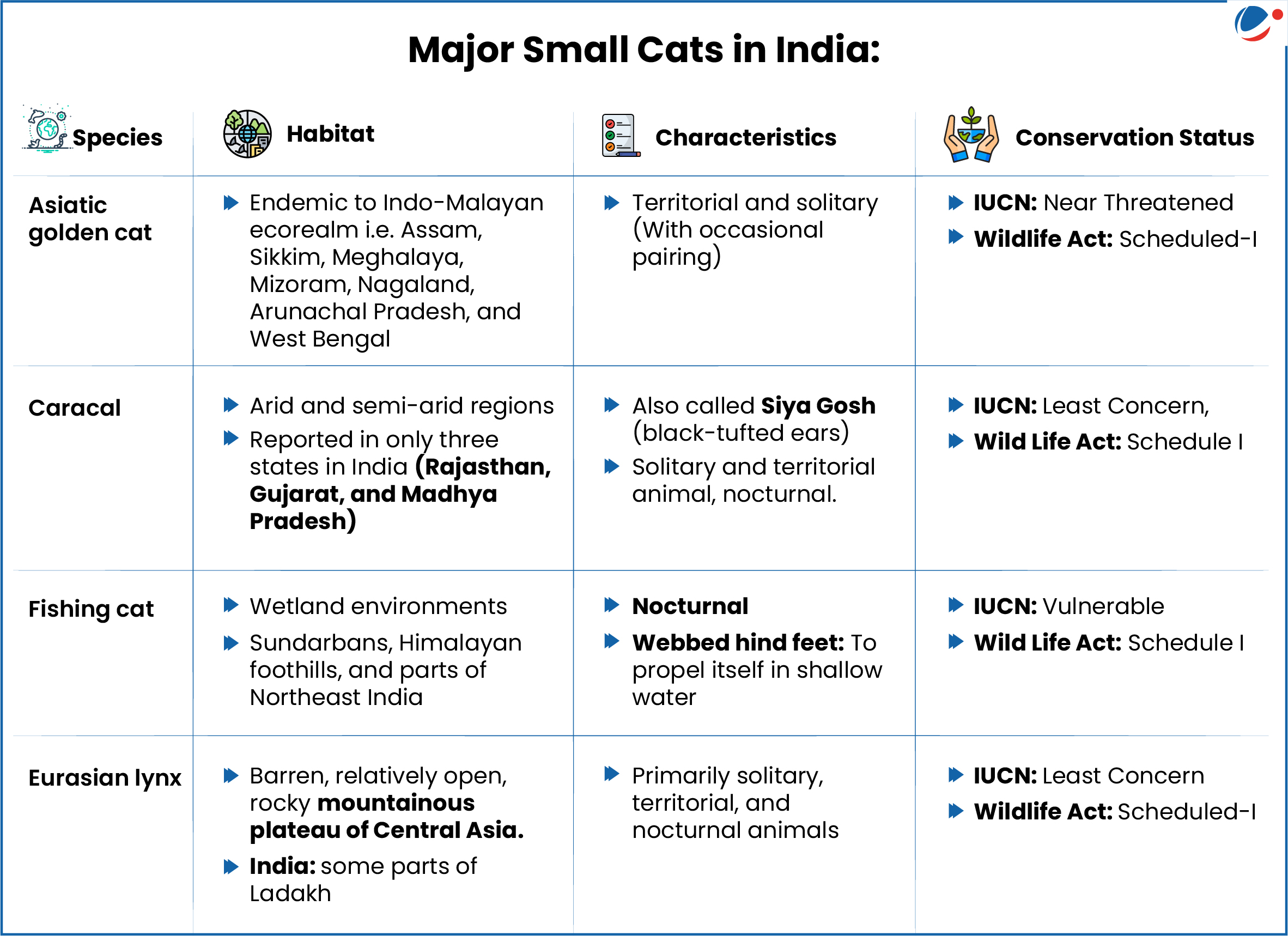Report compiled by Wildlife Institute of India (WII) and National Tiger Conservation Authority (NTCA) provides comprehensive assessment of small cats’ occupancy status and dynamics.
Key Findings:
- Jungle Cat is most widespread small cat species in India, followed by Rusty-Spotted Cat (World’s smallest wildcat).
- 10 small cat species found in India include Pallas’s cat, Eurasian lynx, jungle cat, fishing cat, leopard cat, rusty-spotted cat, marbled cat, Asiatic golden cat, desert cat, and caracal.
About Small Cats
- Small cats are diverse group of hyper carnivores within subfamily Felinae, found across nearly all terrestrial biomes.
- Difference with Big Cats:
- Big cats (Like tigers, lions etc.) possess a flexible hyoid bone enabling them to roar. In contrast, small cats have a rigid hyoid bone, which allows them to purr continuously.
Major Small Cats in India:







